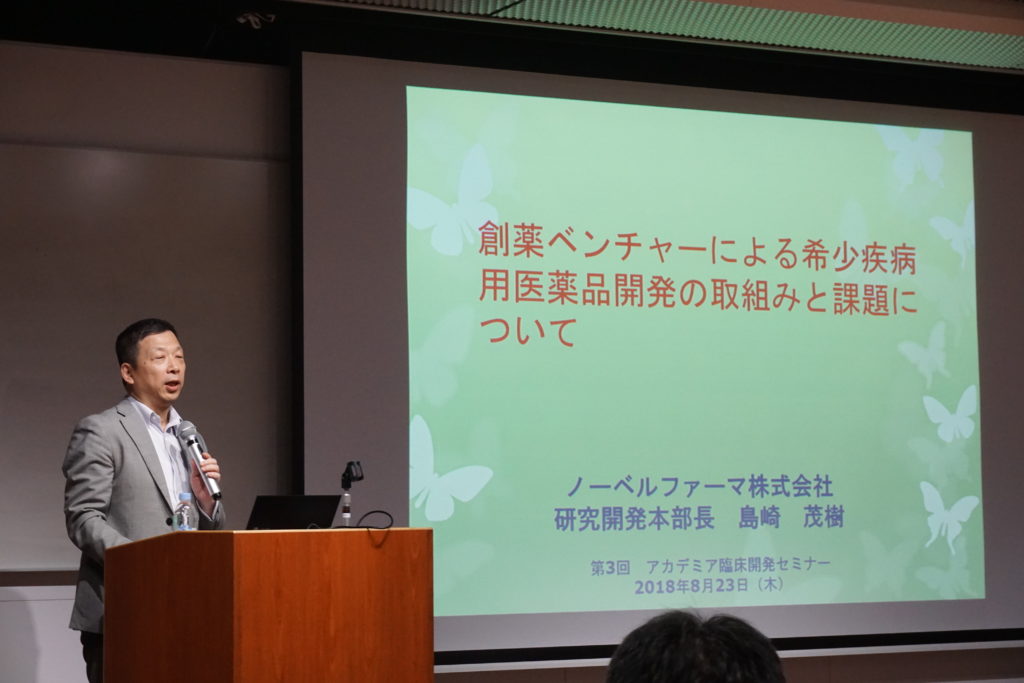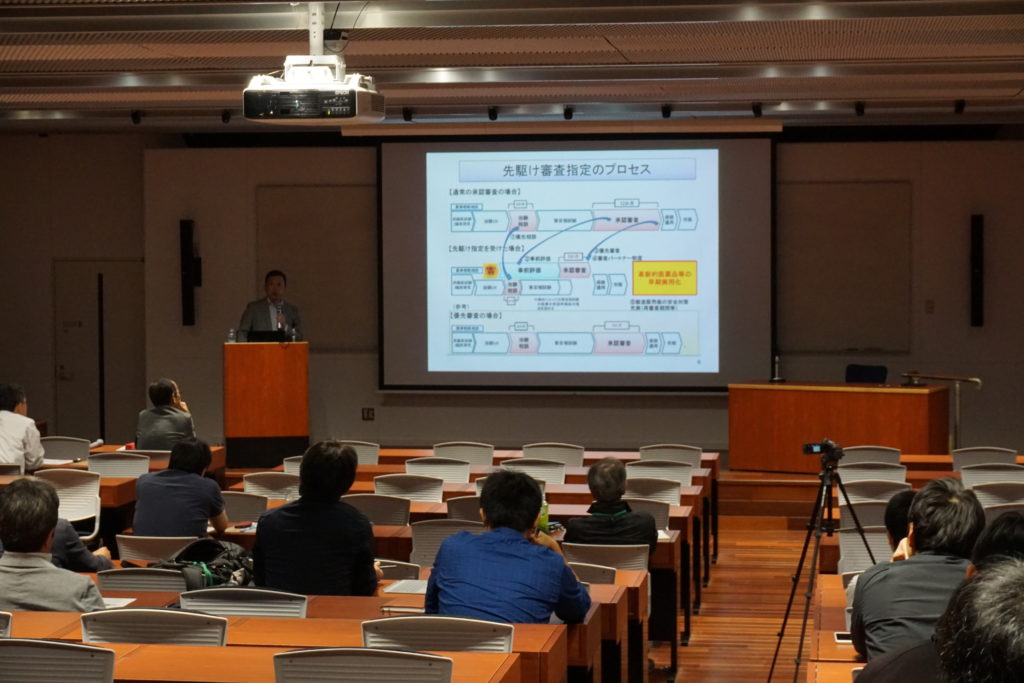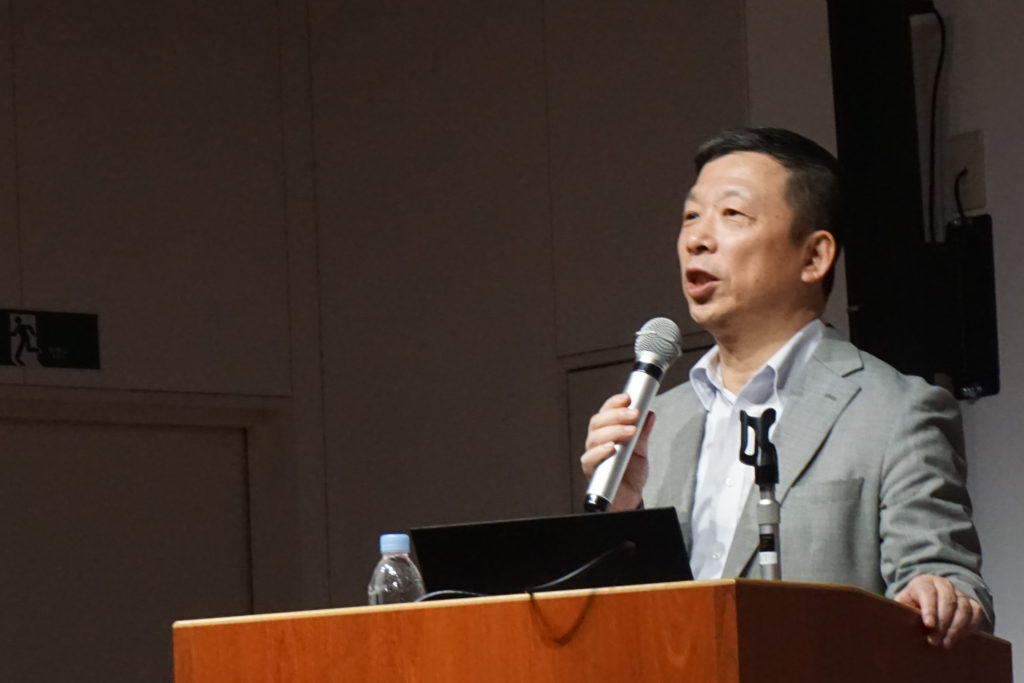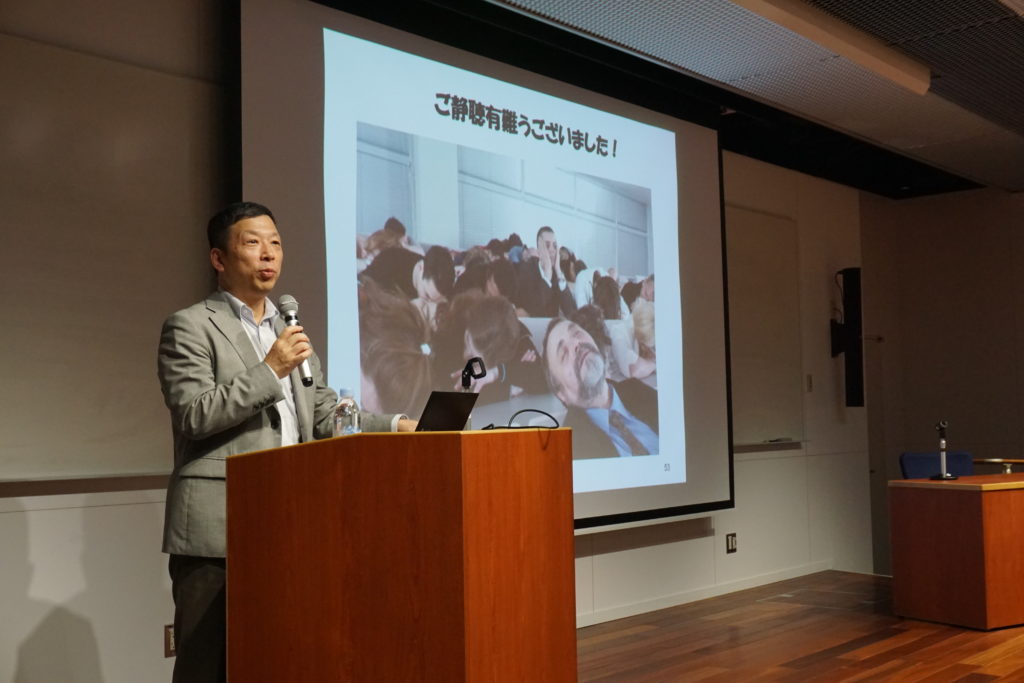(Seminar Report: 3rd Academia Clinical Development Seminar)
The efforts and issues of developing medicines for unmet medical needs by the venture pharmaceutical company
The 3rd Academia Clinical Development Seminar in 2018 FY was held on Friday October 12th at the multi-media hall, Osaka University Hospital. It was planned to be hold this seminar in early August, but it had been postponed due to the influence of the direct hit of the typhoon. We welcomed Mr. Shimazaki as a lecturer from Nobelpharma with a title of “The efforts and issues in developing medicines for unmet medical needs by the venture company of drug discovery”, he talked about and focused on the development of orphan drugs that has been working on.

At the beginning of the lecture, he noted that the regulatory authority pointed out Nobelpharma is no longer the venture company, since they have obtained more than 17 new drug or device applications on market. Even though it has taken not so longer period since the company developed in 2003, they have already obtained so many marketing approvals, he emphasized. Because there is a unique research and development structure in their company with the mission of “Contribute to society by providing necessary but neglected pharmaceuticals and medical devices”.
Nobelpharma has progressed without having R ( Research part) of R & D ( Research and Development ), taken responsibility only for D (development) by their trusted and experienced "judgement", development stance goes on mainly experienced, relatively old human resources in order to make their mission achievable. (It seems to be the median of employees is 57 years old)
He continuously provided more detailed explanation of Japanese scheme in order to get regulatory approval for new drugs or devices through the Designation and Approval of Orphan Drugs and the Sakigake Fast-track Review System, an early approval system led by the Japanese government. Followings are specific three drugs which the company has obtained regulatory approval via the use of the above mentioned scheme; 1)Rapalimus Tablets for Lymphangioleiomyomatosis, 2)Rapalimus Gels for tuberous sclerosis complex and 3) Titanium bridge for Spastic Dysphonia. He introduced how these products have been successfully obtained regulatory approval on market with a collaboration with not only Acacemia but also Ministry of Health, Labor and Welfare (MHLW) and Pharmaceuticals and Medical Devices Agency (PMDA).
The key points of successful developments are the fact that safety and efficacy had already proved by clinical research, enthusiasm of investigators and funding, he mentioned. In the past, major pharmaceutical companies were not willing to do research and development for rare diseases, due to the issues of profitability and business sustainability. Therefore, the significance of the development by public funds was emphasized. The proactive supports from an association related to the disease as well as patients association are also absolutely necessary to run good development.
Their advanced business model based on products derived from academia with a usage of public funds is now attracting most attention. Because the model is thought to be different from one implemented by other venture companies aiming to license their original medical products out to mega-pharma that is also different from a method for translational research between academia and companies.
At the end of his lecture, he briefly talked about the economic burden of post-marketing surveillance. There are some cases that pharmaceutical approval does not directly lead to profit resulting in financial deficit. Therefore it seems that they need to cover the deficit by other profit.
His lecture helped us recognizing the importance of the research and development especially in rare diseases field using public fund and efforts by academia with a collaboration of MHLW, AMED and PMDA through the advanced system for getting approval that has been provided by Japanese government. Because as you may know, this field is considered as unmet medical needs that companies generally did not try to do research and development due to unbalance of profitability.
Among the questions after the lecture, tribute to the past efforts and achievements from the audience was given, and the lecture was closed with huge applause.


